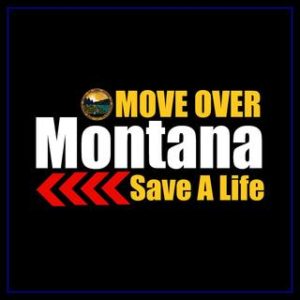In Montana, it’s the law to slow down and move over when you see the lights of a stationary emergency, towing or maintenance vehicle. The move over law is required to be observed on all Montana roadways open to the public. When unable to move over, you are required to slow down by at least 20 mph. Not only is this the law, but taking these simple steps could save a life and it is your moral responsibility as a driver on Montana’s roadways to move over. The lives of emergency and road assistance workers are put on the line to do their jobs and they depend on motorists paying attention, slowing down, and moving over. Emergency scenes are complicated and there is always more going on than other motorists on the road can see or appreciate. For example, officers, fire, and EMS personnel may be tending to injured people, communicating with other emergency responders, assessing injuries, and controlling the scene, among other duties. These responders don’t have time to have to continuously look over their shoulders to stay safe. Move over and slow down. It’s the law.
M.C.A. 61-8-346
Operation of vehicles on approach of authorized emergency vehicles or police vehicles — approaching stationary emergency vehicles or police vehicles.
…
(3) Except as provided in subsection (4), upon approaching a stationary authorized emergency vehicle or police vehicle that is displaying visible signals of flashing or rotating amber, blue, red, or green lights, the operator of the approaching vehicle shall:
(a) reduce the vehicle’s speed, proceed with caution, and, if possible considering safety and traffic conditions, move to a lane that is not adjacent to the lane in which the authorized emergency vehicle or police vehicle is located or move as far away from the authorized emergency vehicle or police vehicle as possible; or
(b) if changing lanes is not possible or is determined to be unsafe, reduce the vehicle’s speed, proceed with caution, and maintain a reduced speed, appropriate to the road and the conditions, through the area where the authorized emergency vehicle or police vehicle is stopped.
(4) Upon approaching a stationary authorized emergency vehicle or police vehicle that is displaying visible signals of flashing or rotating amber, blue, red, or green lights on a public highway with a posted speed limit of 50 miles per hour or greater when driving in a lane that is directly next to the emergency vehicle or police vehicle, the operator of the approaching vehicle shall reduce the vehicle’s speed by at least 20 miles per hour below the posted speed limit.
REMEMBER, SLOW DOWN AND MOVE TO A SAFE LANE OR AREA.






